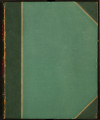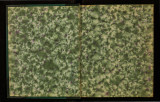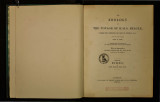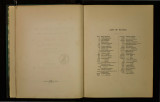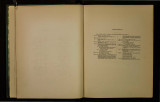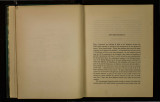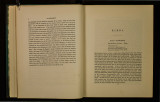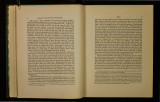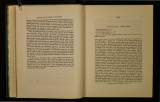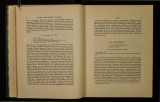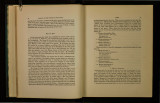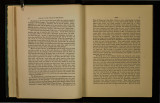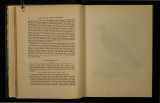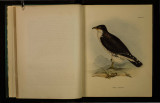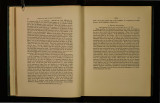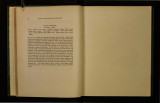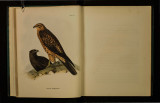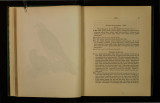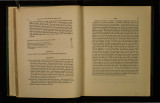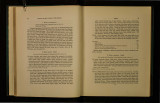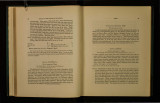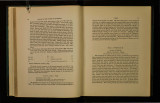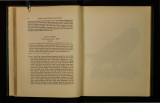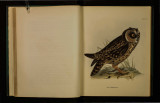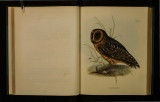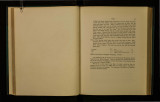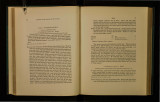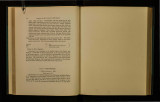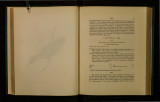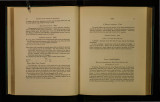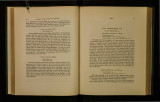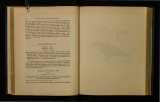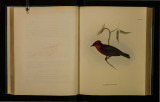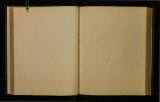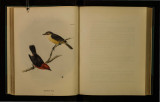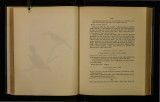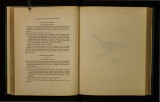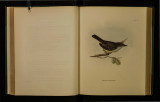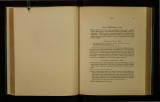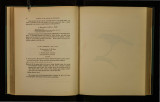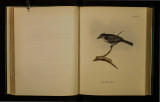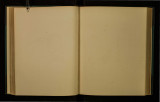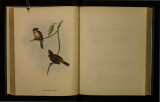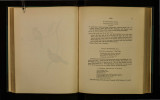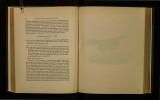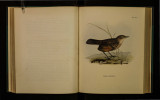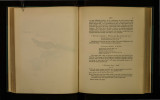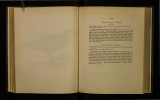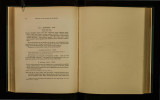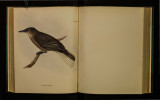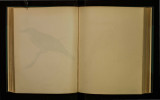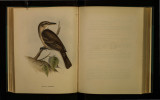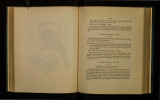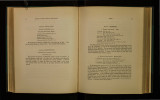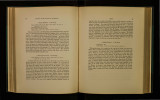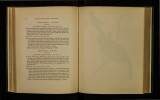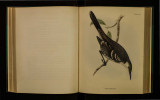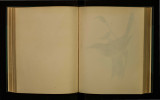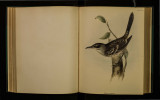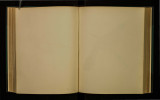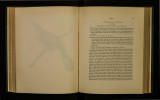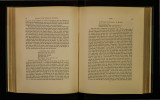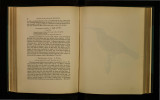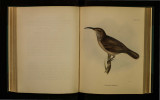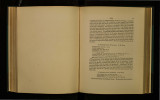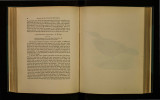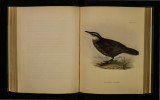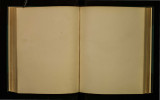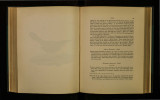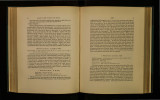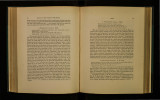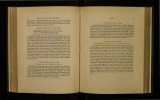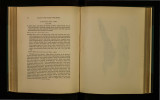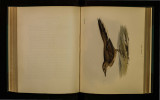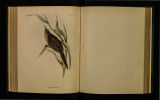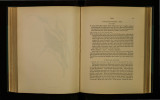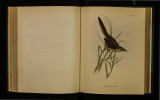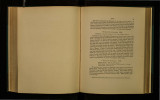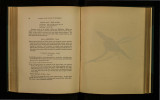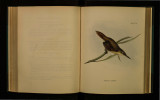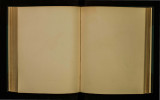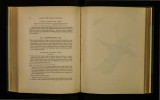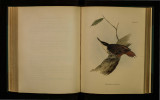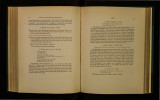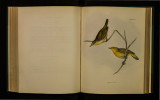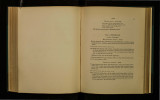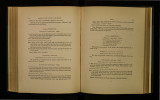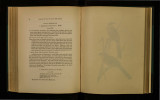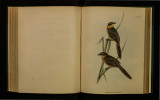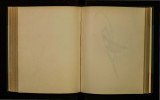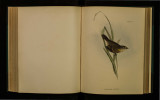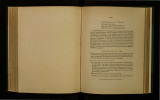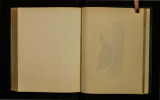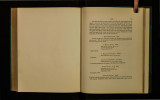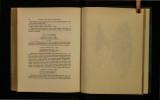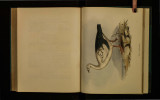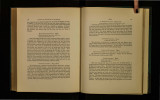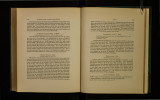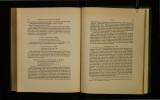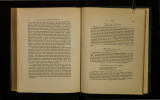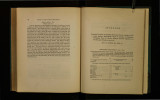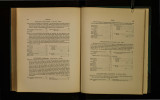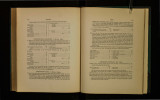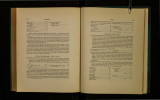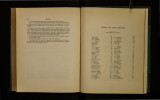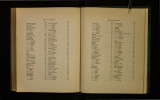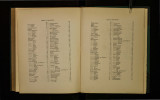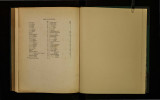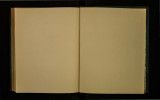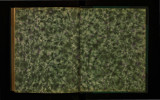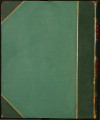| OCR Text |
Show 10 ZOOLOGY OF TilE VOYAGE OF THE BEAGLE. animal dies in the plain, the Catltartes atmtus or Gallinazo commences the feast, and then these two carrion-feeding hawks pick the bones clean. Although belonging to closely allied genera, and thus commonly feeding together, they are far from being friends. When the Carrancha is quietly seated on the branch of a tree, or on the ground, the Chimango often continues flying backwards and forwards for a long time, up and down in a semicircle, trying each time, at the bottom of the curve, to strike its larger relative. The Carrancha takes little notice, except by bobbing its head. Although the Carranchas frequently assemble in number::s, they are not gregarious; for in desert places they may be seen solitary, or more commonly by pairs. Besides the carrion of large animals, these birds frequent the borders of streams and the sea-beach, for the sake of picking up whatever the waters may cast on shore. In Tierra del Fuego, and on the west coast of Patagonia, they must live almost exclusively on this last means of supply. The Carranchas are said to be very crafty, and to steal great numbers of eggs ; they attempt also, together with the Chimango, to pick the scabs off the sore backs of both horses and mules. On the one hand, the poor animal, with its ears down and its back arched; and, on the other, the hovering bird, eyeing at the distance of a yard, the disgusting morsel, form a picture which has been described by Captain Head with his own peculiar spirit and accuracy. The Carranchas kill wounded animals; but Mr. Bynoe (the surgeon of the Beagle) saw one seize in the air a live partridge, which, however, escaped, and was for some time chased on the gronnd. I believe this circumstance is very unusual: at all events there is no doubt that the chief part of their sustenance is derived from carrion. A person will discover their necrophagous habits by walking out on one of the desolate plains, and there lying down to sleep : when he awakes, he will see on each surrounding hillock, one of these birds patiently watching him with an evil eye. It is a feature in the landscape of these countries, which will be recognised by every one who has wandered over them. If a party goes out hunting with dogs and horses, it will be accompanied during the day, by several of these attendants. The uncovered craw of the Carrancha, after feeding, protrudes from its breast; at such times it is, and indeed generally, an inactive, tame, and cowardly bird. Its flight is generally heavy and slow, like that of the English carrion crow, whose place it so well supplies in America. It seldom soars; but I have twice seen one at a great height gliding through the air with much eas~. It runs (in contradistinction to hopping), but not quite so quickly as some of It.s congeners. At times the Carrancha is noisy, but is not generally so; its cry Is. loud, very harsh and peculiar, and may be compared to the sound of the Spamsh guttural g, fo~lowed by a rough doubler r. Perhaps the Spaniards of Buenos Ayres,. from ~his cause, have called it Carrancha. Molina, who says it is called Tharu m Ch1le, states, that when uttering this cry, it elevates its head BIRDS. 11 higher and higher, till at last, with its beak wide open, the crown almost touches the lower part of the back. This fact, which has been doubted, is true ; for I have myself several times seen them with their heads backwards, in a completely inverted position. The Carrancha builds a large coarse nest, either in a low cliff, or in a bush or lofty tree. To these observations I may add, on the high authority of Azara, whose statements have lately been so fully confirmed by M. D'Orbigny, that the Carrancha feeds on worms, shells, slugs, grasshoppers, and frogs; that it destroys young lambs by tearing the umbilical cord: and that it pursues the Gallinazos and gulls which attend the slaughteringhouses, till these birds are compelled to vomit up any carrion they may have lately gorged. Lastly, Azara states that several Carranchas, five or six together, will unite in chase of large birds, even such as herons. All these facts show that it is a bird of very versatile habits and considerable ingenuity. I am led to suppose that the young birds of this species sometimes congregate together. On the plains of Santa Cruz (lat. 50° S. in Patagonia), I saw in the month of April, or early autumn, between twenty and thirty Polybori, which I at first .thought would form a species distinct from P. Bmsiliensis. Amongst those I killed, there were some of both sexes ; but the ovarium in the hens was 0~11~ slightly ~ranular. The plumage of the different individuals was nearly Similar ; and m none appeared like that of an adult bird, although certainly not of a very young one. Having mentioned these circumstances to Mr. Gould, he li~e':"ise suspected it would form a new species ; but the differences appear so tn~mg between it and the specimens of young birds in the British Museum and ~n tb~ Museum of the Zoological Society, and likewise of the figure of a you~g bi~d given by Spix, (Avium Species Novre, vol. i. p. 3.), that I have tho.ugh~ It advisable merely to allude to the circumstance. In my specimen, which IS a cock, the head, instead of being of a dark brown, which is the usual character of even very immature birds, is of a pale rusty brown. The bill and cere are less produced than in the adult P. Brasiliensis; and the cere is of a brighter colour, than ':hat appears to be usual in the young of this species. In oth~r respects there IS such a perfect similarity between them, that I do not hesitate to consider my specimen as a young bird of the P. Brasiliensis in one of its st~tes of change ;-and to be subject to great variation of plumage during growth, IS known t~ be a character common to the birds of this sub-family. It may, however, possibly be some variety of the P. Brasiliensis, for this bird seems subje~t to,~ariation: A~ar~ ~Voyage dans !'Amerique Meridionale, vol. iii. p. 3.5.) rema1ks, II Y a des md1vidus dont les teintes sont plus faibles, ou d'un brun ~ll~e, av:c des tac~e~ sur la poitrine, et d'autres qui ont des couleurs plus foncees; J ai decnt ceux qm tiennent le milieu entre les uns et les autres." I have myself more than once observed a single very pale-coloured bird, in c 2 |


